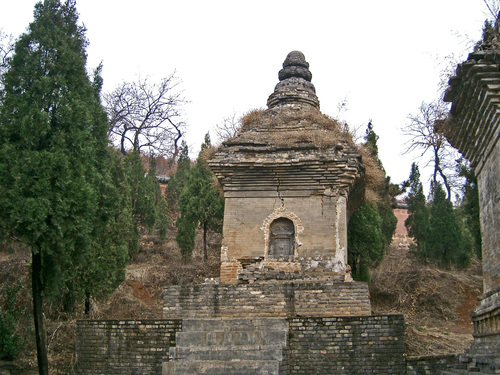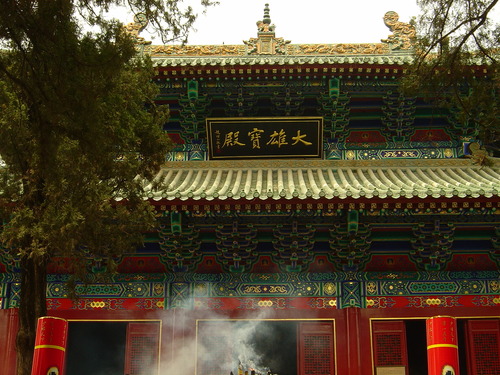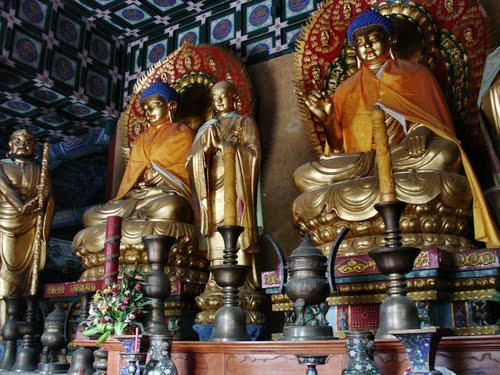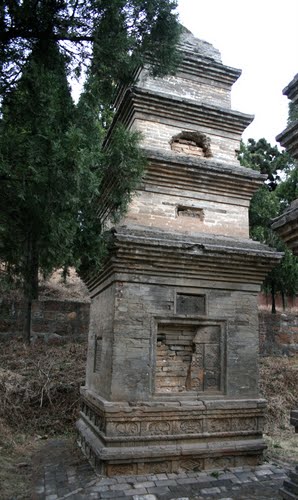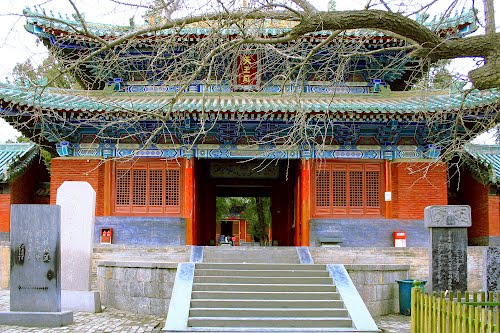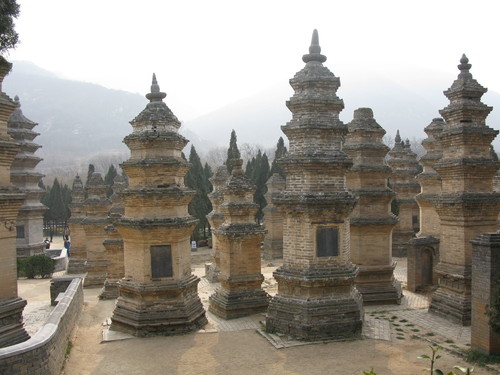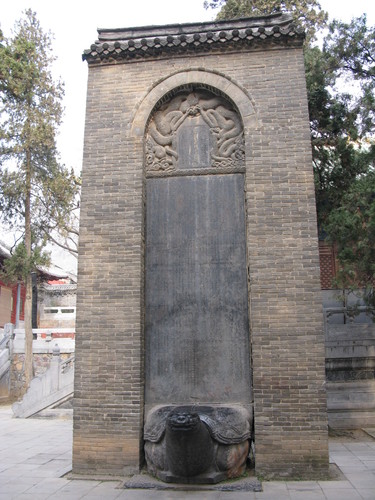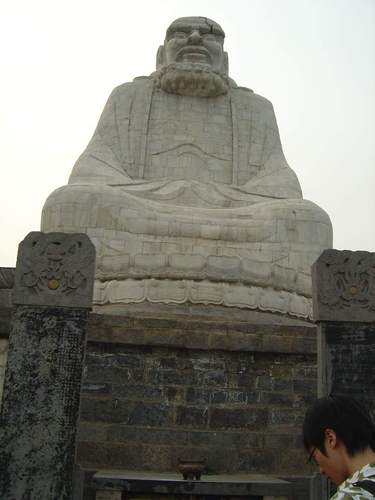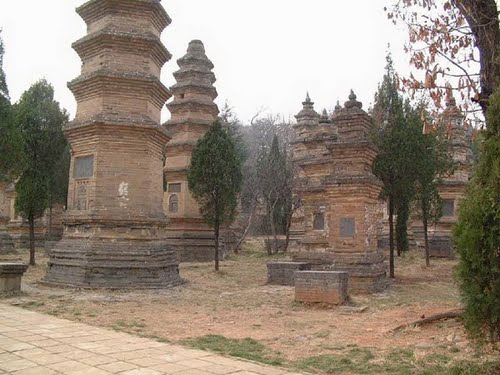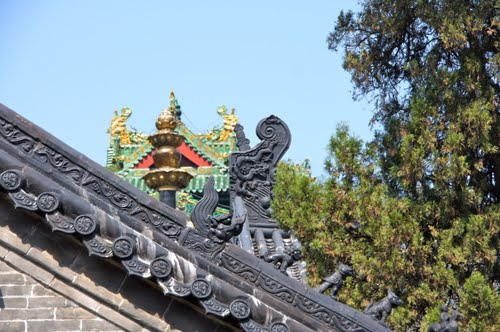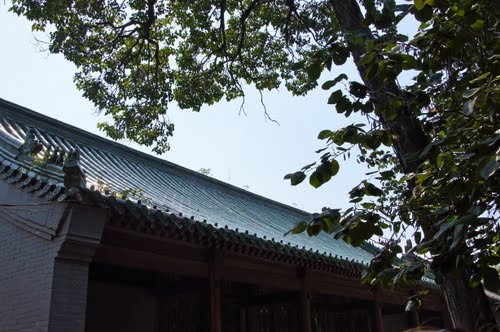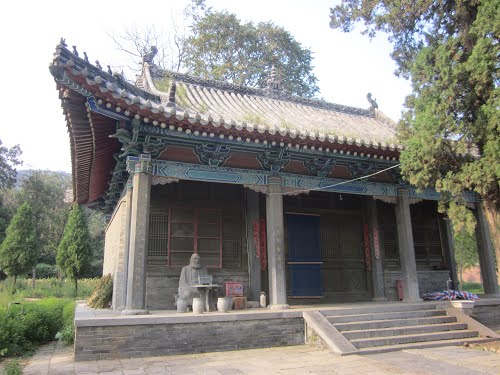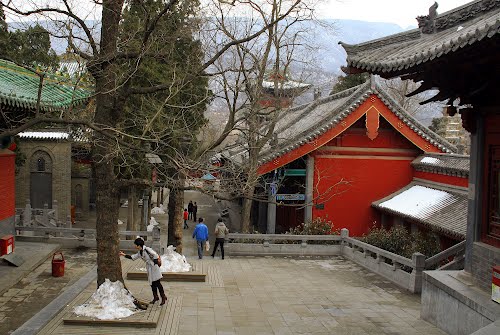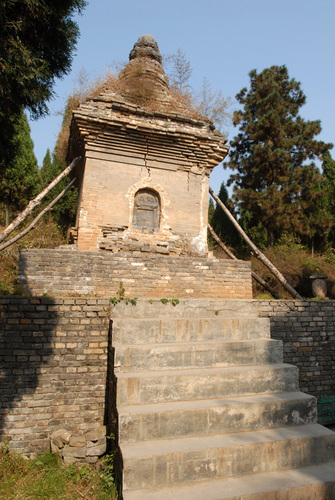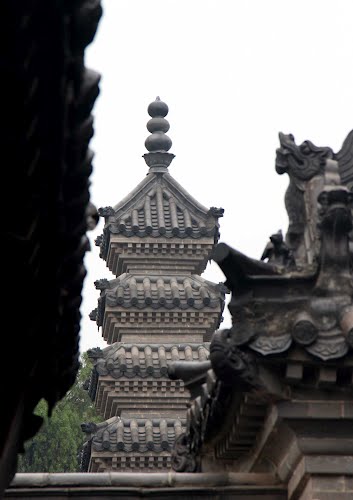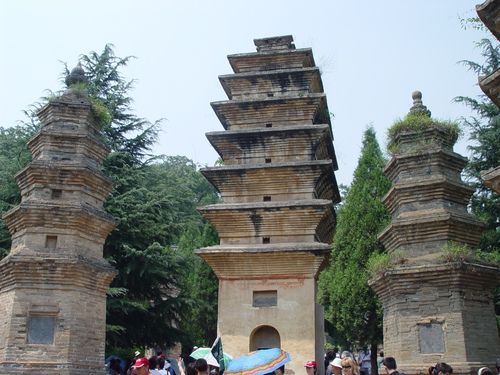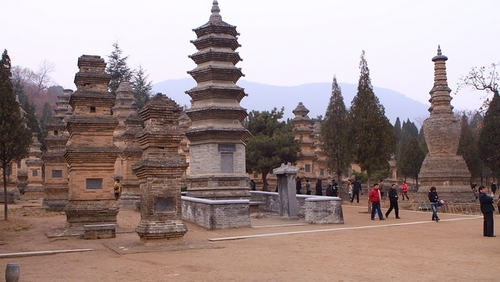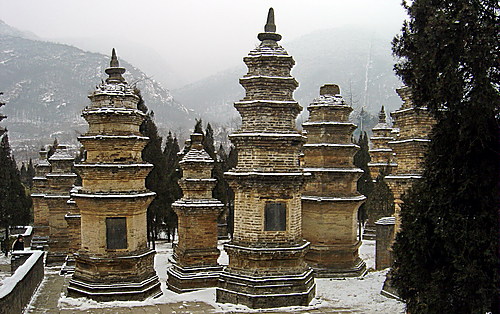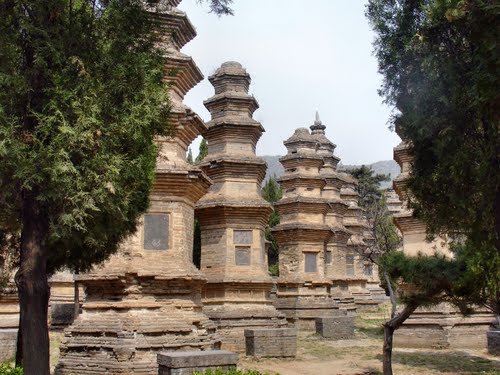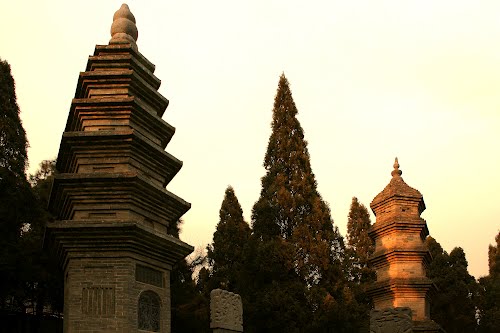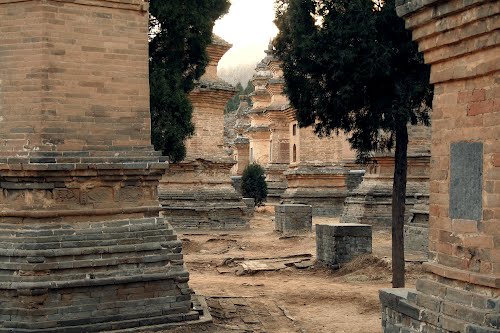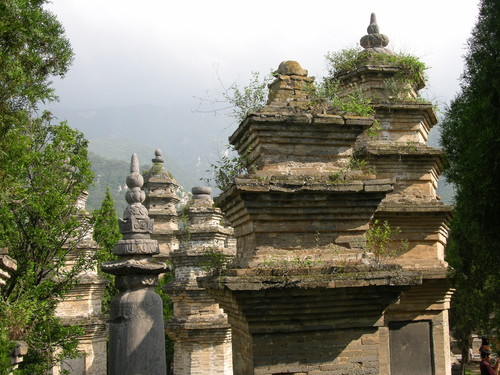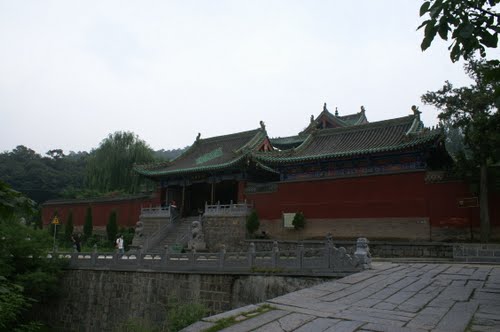The Shaolin Monastery, also known as the Shaolin Temple, is a Chan Buddhist temple in Dengfeng County, Henan Province, China. Dating back 1,500 years, Shaolin Temple is the main temple of the Shaolin school of Buddhism to this day.
Shaolin Monastery and its Pagoda Forest were inscribed as a UNESCO World Heritage Site in 2010 as part of the "Historic Monuments of Dengfeng".
History
Establishment
The name refers to the forests of Shaoshi mountain, one of the seven peaks of Song mountains. The first Shaolin Monastery abbot was Batuo a dhyana master who came to China from India or from Greco-Buddhist Central Asia in 464 AD to spread Buddhist teachings.
According to the Continued Biographies of Eminent Monks (645 AD) by Daoxuan, Shaolin Monastery was built on the north side of Shaoshi, the central peak of Mount Song, one of the Sacred Mountains of China, by Emperor Xiaowen of the Northern Wei Dynasty in 477 AD. Yang Xuanzhi, in the Record of the Buddhist Monasteries of Luoyang (547 AD), and Li Xian, in the Ming Yitongzhi (1461), concur with Daoxuan's location and attribution. The Jiaqing Chongxiu Yitongzhi (1843) specifies that this monastery, located in the province of Henan, was built in the 20th year of the Taihe era of the Northern Wei Dynasty, that is, the monastery was built in 495 AD.
The Kangxi Emperor of the Qing Dynasty was a supporter of Shaolin Temple, and he wrote the calligraphic inscriptions that still hang over the Heavenly King Hall and the Buddha Hall today.
Traditionally Bodhidharma is credited as founder of the martial arts at the Shaolin Temple. However, martial arts historians have shown this legend stems from a 17th-century qigong manual known as the Yijin Jing.
The authenticity of the Yi Jin Jing has been discredited by some historians including Tang Hao, Xu Zhen and Matsuda Ryuchi.
Other scholars see an earlier connection between Da Mo (Bodhidharma) and the Shaolin Monastery. Scholars generally accept the historicity of Da Mo who arrived in China around 480. Da Mo and his disciples are said to have lived a spot about a mile from the Shaolin Temple that is now a small nunnery. In the 6th century, around 547, The Record of the Buddhist Monasteries says Da Mo visited the area near Mount Song. In 645 The Continuation of the Biographies of Eminent Monks describes him as being active in the Mount Song region. Around 710 Da Mo is identified specifically with the Shaolin Temple and writes of his sitting facing a wall in meditation for many years. It also speaks of Huikes many trials in his efforts to receive instruction from Da Mo. In the 11th century a (1004) work embellishes Da Mo legends with great detail. A stele inscription at the Shaolin Monastery dated 728 reveals Da Mo residing on Mount Song. Another stele in 798 speaks of Huike seeking instruction from Da Mo. Another engraving dated 1209 depicts the barefoot saint holding a shoe according to the ancient legend of Da Mo. A plethora of 13th- and 14th-century steles feature Da Mo in Various roles. One 13th-century image shows him riding a fragile stalk across the Yangtze River. In 1125 a special temple was constructed in his honor at the Shaolin Monastery.
Recent history
There is evidence of Shaolin martial arts being exported to Japan since 18th century. Martial arts such as Okinawan Shorin-ryu style of Karate, for example, has a name meaning "Shaolin School" and the Japanese Shorinji Kempo is translated as "Shaolin Temple Fist Method". Other similarities can be seen in centuries-old Chinese and Japanese martial arts manuals.
In 1928, the warlord Shi Yousan set fire to the monastery, burning it for over 40 days, destroying a significant percent of the buildings, including many manuscripts of the temple library.
The Cultural Revolution launched in 1966 targeted religious orders including the monastery. The five monks who were present at the monastery when the Red Guards attacked were shackled and made to wear placards declaring the crimes charged against them. The monks were jailed after publicly being flogged and paraded through the street as people threw rubbish at them. The government purged Buddhist materials from within the monastery walls, leaving it barren for years.
Martial arts groups from all over the world have made donations for the upkeep of the temple and grounds, and are subsequently honored with carved stones near the entrance of the temple.
According to legend, during the Tang dynasty, Emperor Taizong granted the Shaolin Temple extra land and special "imperial dispensation" to eat meat, and drink, which would make Shaolin the only temple in China that did not prohibit alcohol, although this practice has ceased today. This legend is not corroborated in any period documents, such as the Shaolin Stele erected in 728. The stele does not list any such imperial dispensation as reward for the monks' assistance during the campaign against Wang Shichong, only land and a water mill are granted.
In the past, many have tried to capitalise on Shaolin Monastery fame by building their own schools on Mount Song. However, the Chinese government eventually outlawed this, the schools were moved to the nearby towns. A dharma gathering was held from August 19 to August 20, 1999, in Shaolin Monastery for Shi Yongxin's assumption of office as abbot. In 2007, the Chinese government partially lifted the 300-year ban of the Jieba. The Jieba is the ancient ceremony of the nine marks, which are burned onto the head with sticks of incense. The ban was partially lifted only for those who were mentally and physically prepared to participate in the tradition.

